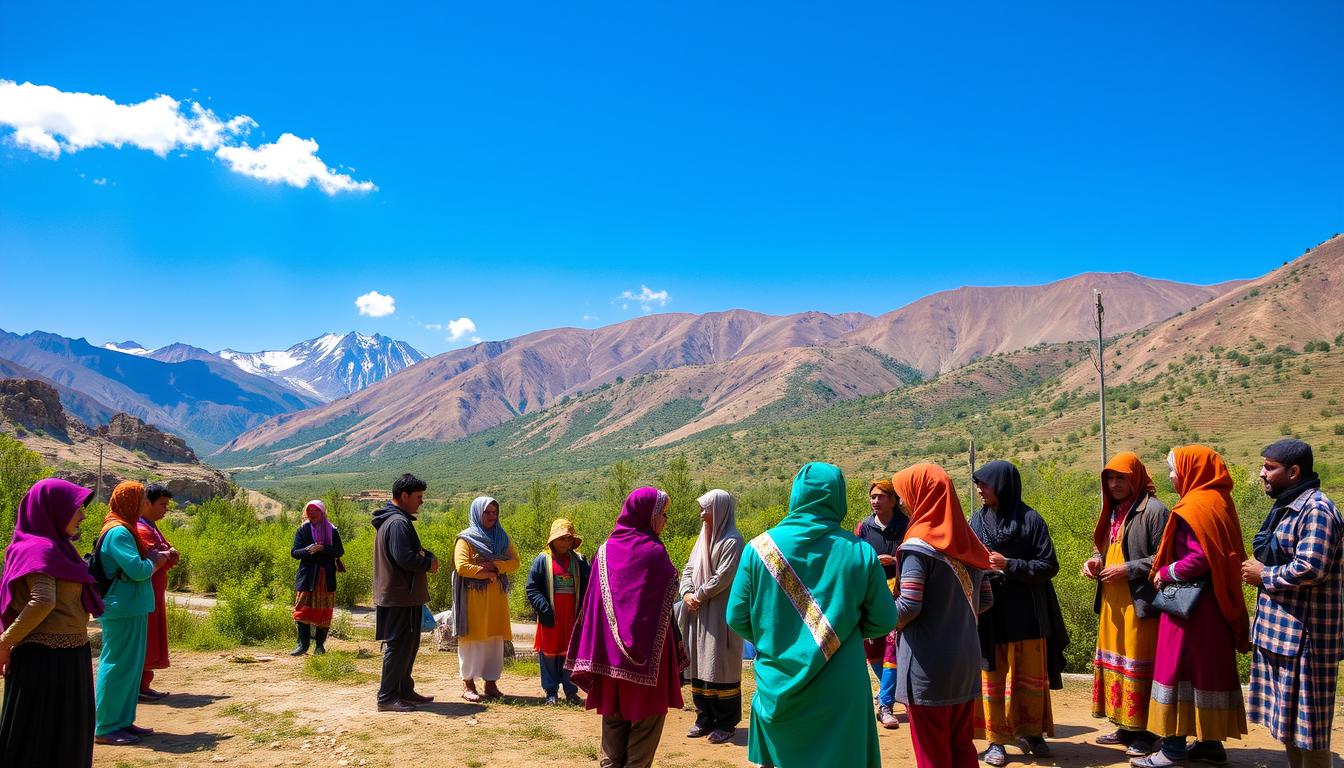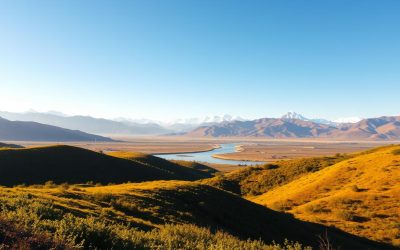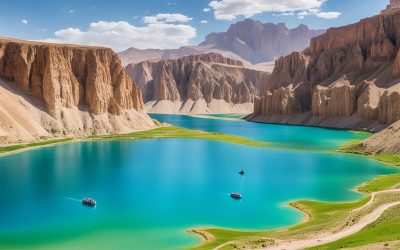Ever thought about how language shapes a nation’s culture? In Afghanistan, two languages stand out. They are key to the country’s communication and identity.
In Afghanistan, Dari and Pashto are the official languages. They are more than just ways to talk. They tell the story of Afghanistan’s rich culture. Dari is spoken by 77% of people, and Pashto by 48%.
Exploring Afghanistan’s languages takes you on a journey through history and culture. Dari and Pashto both come from the Iranian language family. They carry centuries of tradition and importance for different regions.
Key Takeaways
- Afghanistan has two official languages: Dari and Pashto
- Dari is spoken by 77% of the population
- Pashto is spoken by 48% of Afghans
- Both languages belong to the Iranian language family
- Languages play a crucial role in preserving cultural identity
Understanding Afghanistan’s Linguistic Diversity
Afghanistan is a unique place with over 40 languages. This shows its rich culture. The mix of languages creates a complex way of communication.
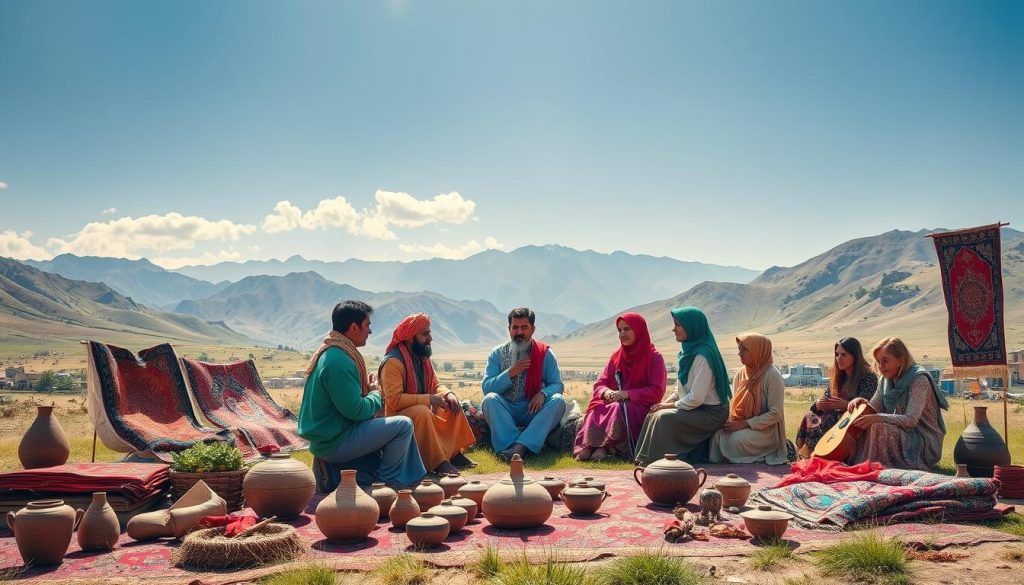
- 85.4% belong to the Iranic language family
- 10.7% are Turkic languages
- 3.9% represent other language families
Language Families Explored
Persian languages are key in Afghanistan. Dari, a Persian variant, helps people from different groups talk. It’s not everyone’s first language but is used widely.
Multilingualism in Afghan Society
In Afghanistan, speaking many languages is common. People often know two or more languages. This shows the country’s diverse culture. Cities tend to have more language skills than rural areas.
Historical Influences on Language Distribution
History has shaped Afghanistan’s languages. Invasions and migrations have changed language use. Today, languages keep evolving and changing.
“Language is the road map of a culture. It tells you where its people come from and where they are going.” – Rita Mae Brown
Learning about Afghanistan’s languages helps us understand its culture and history. It shows how people interact and change over time.
Dari and Pashto: The Official Languages
Afghanistan’s language scene is rich and complex. Two main languages, Dari and Pashto, are key to national communication and cultural identity. They reflect the country’s diverse ethnic makeup and deep history.
Dari: Afghanistan’s Linguistic Bridge
Dari is the main language spoken by over 75% of Afghans. It’s a form of Persian that helps people from different ethnic groups talk to each other. It’s used in government, media, and schools, playing a big role in keeping the country united.
- Spoken by approximately 7.6 million Afghans
- Serves as a communication bridge between ethnic groups
- Used in official government communications
Pashto’s Cultural and Political Significance
Pashto is the heart of Pashtun culture, spoken by about 48% of Afghans. It’s important in southern regions for its political and social ties. Pashto is also tied to traditional music, literature, and social customs.
“Language is the road map of a culture. It tells you where its people come from and where they are going.” – Rita Mae Brown
Regional Language Distribution
Dari and Pashto are spread differently across Afghanistan. In cities like Kabul, people speak many languages. But in rural areas, communities often stick to one language.
| Language | Percentage of Speakers | Primary Regions |
|---|---|---|
| Dari | 77% | Northern and Central Afghanistan |
| Pashto | 48% | Southern and Eastern Afghanistan |
Knowing how Dari and Pashto work in Afghanistan helps us understand its complex language and culture.
Statistical Analysis of Language Usage
Afghanistan’s language scene is rich and diverse. The country’s language demographics show a complex mix of languages. Here, many languages live together and influence each other.
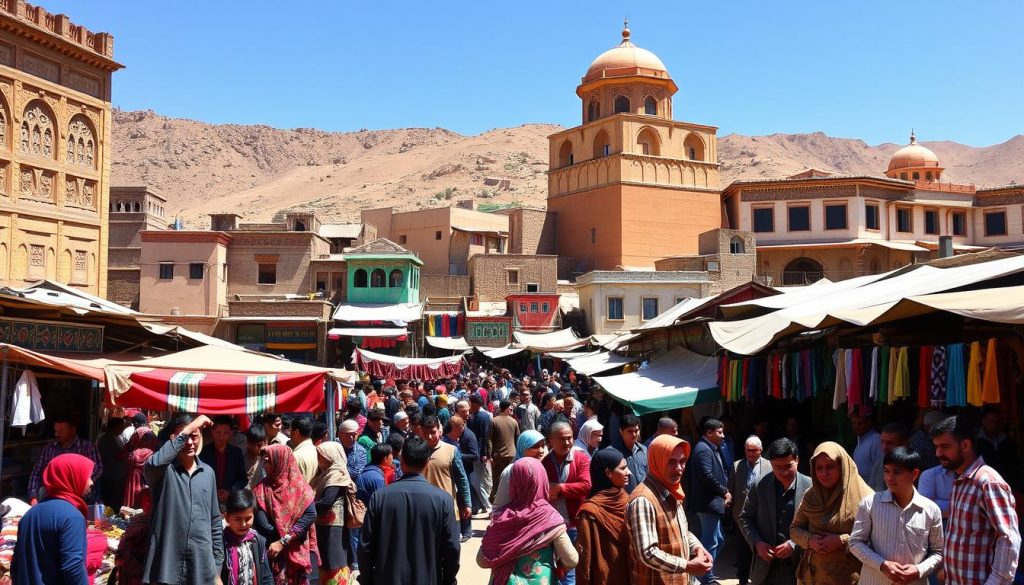
- Dari: About 50% of the people speak it.
- Pashto: Around 35% of the population speaks it.
- Uzbek: 11% of speakers use it.
- English: 6% of the population speaks it.
- Turkmen: 3% of speakers use it.
- Urdu: 3% of the population speaks it.
In cities, language use is changing. Young people and students are learning more languages. English is becoming more popular. Uzbek and Turkmen communities, though smaller, are important for Afghanistan’s language mix.
| Language | Percentage of Speakers | Primary Regions |
|---|---|---|
| Dari | 50% | Central and Western Afghanistan |
| Pashto | 35% | Southern and Eastern Regions |
| Uzbek | 11% | Northern Provinces |
| Turkmen | 3% | Northern Border Regions |
The literacy rate is about 37%. This affects how people communicate in different Afghan communities. Schools mainly teach in Dari and Pashto. This makes these languages important for culture and government.
*Language is the road map of a culture. It tells you where its people come from and where they are going.* – Rita Mae Brown
Regional Language Policy and Recognition
Afghanistan’s language scene is a colorful mix of cultures and government efforts to keep minority languages safe. In 2004, the country’s constitution made several regional languages official. This move showed Afghanistan’s commitment to including all languages.
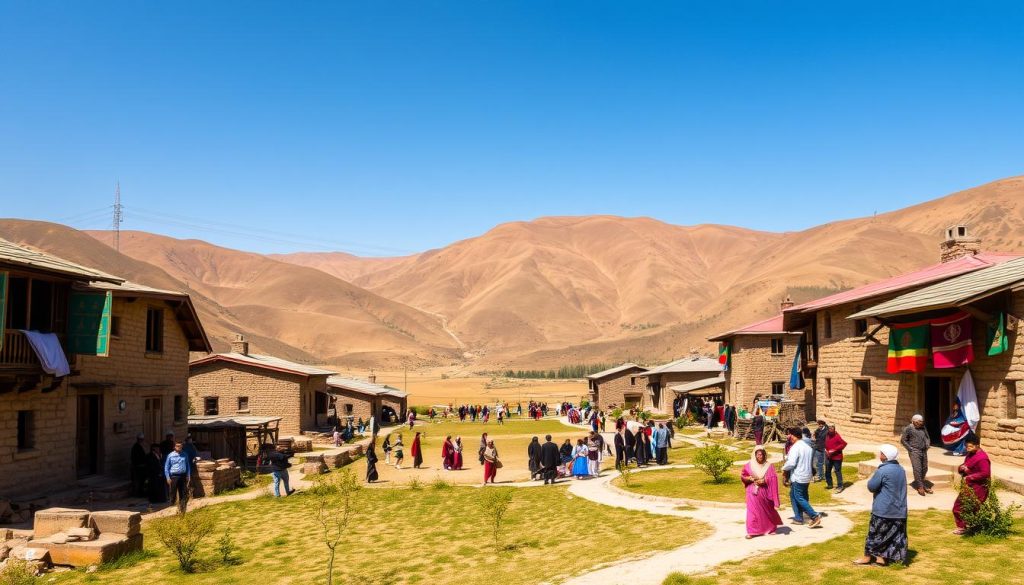
The language policy in Afghanistan works to keep the many languages spoken in the country alive. It sees the value of languages like Balochi, Pashayi, and Nuristani in their areas.
Government Language Initiatives
Key language initiatives include:
- Constitutional protection for minority language speakers
- Regional language recognition in areas with significant populations
- Support for linguistic diversity in government communications
Protection of Minority Languages
The government has set up ways to protect languages like Nuristani and Pashayi. These efforts include:
- Documenting endangered languages
- Creating preservation programs
- Supporting local language research
Educational Language Programs
Afghanistan’s schools focus on teaching in many languages. The programs aim to:
- Bilingual education in minority language regions
- Teaching official languages alongside regional languages
- Supporting mother-tongue education
| Language | Estimated Speakers | Region |
|---|---|---|
| Balochi | 400,000 | Southwestern Afghanistan |
| Pashayi | 434,000 | Eastern Afghanistan |
| Nuristani | 130,000 | Nuristan Province |
These language policies show Afghanistan’s commitment to keeping cultures and languages alive. They help minority communities keep their unique identities.
Afghanistan: Official and widely spoken languages
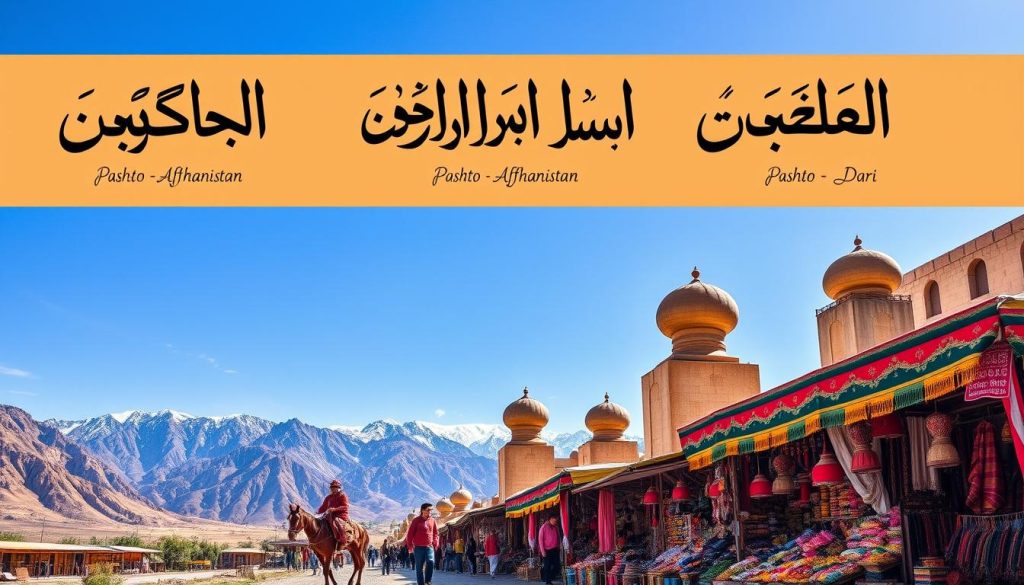
Afghanistan is home to a diverse range of languages. Dari and Pashto are the official languages. They are key for communication among different groups.
Dari is spoken by about 77% of people. It’s a Persian-based language that connects many ethnic groups. It’s used in government, media, and schools.
“Language is the roadmap of a culture. It tells you where its people come from and where they are going.” – Rita Mae Brown
Pashto is the second official language, spoken by 48% of the population. It’s mainly used by the Pashtun people. This language holds great cultural and political value.
- Dari: Official language, spoken by 77% of population
- Pashto: Official language, spoken by 48% of population
- Total languages in Afghanistan: Over 40 distinct languages
Afghanistan’s language diversity shows its complex history and culture. Besides Dari and Pashto, many minority languages add to the country’s rich communication scene.
| Language | Speakers (%) | Language Family |
|---|---|---|
| Dari | 77 | Iranic |
| Pashto | 48 | Iranic |
| Uzbek | 11 | Turkic |
| English | 6 | Indo-European |
Knowing about Afghanistan’s languages helps us understand its rich culture. It shows how communities communicate and keep their identities alive.
Major Minority Languages and Their Communities
Afghanistan’s language scene is full of diverse groups. These groups show the country’s rich culture. Besides Dari and Pashto, many minority languages add to the mix.
Uzbek and Turkmen Linguistic Communities
Uzbek speakers make up about 11% of Afghanistan’s people. They live mainly in the north. Their culture is strong and unique. Turkmen speakers, though fewer, also add to the north’s language mix.
- Uzbek language regions: Northern provinces
- Estimated Uzbek population: Around 2 million
- Turkmen speakers: Concentrated in specific northern districts
Balochi, Pashayi, and Nuristani Language Groups
These groups are smaller but very important in Afghanistan. Balochi speakers number about 200,000. Pashayi communities have around 400,000 people. The Nuristani live in mountains, keeping their language and culture alive.
| Language Group | Estimated Population | Primary Regions |
|---|---|---|
| Balochi | 200,000 | Southwestern provinces |
| Pashayi | 400,000 | Eastern mountain regions |
| Nuristani | 100,000 | Mountainous northeastern areas |
“Language is the roadmap of a culture. It tells you where its people come from and where they are going.” – Rita Mae Brown
Other Significant Language Communities
Afghanistan also has many other language groups. These include Pamiri languages and local dialects. They make the country’s language scene very complex.
Endangered Languages and Preservation Efforts
Afghanistan’s language scene is at risk. UNESCO lists 23 endangered languages here, with Pamiri languages being key to saving them.
Global trends like urban migration hurt language diversity. Young people often leave their native tongues behind. This is especially true for Pamiri languages, spoken in remote areas.
“Language is the roadmap of a culture. It tells you where its people come from and where they are going.” – Rita Mae Brown
Factors Contributing to Language Endangerment
- Economic migration to urban centers
- Reduced intergenerational language transmission
- Societal pressure to adopt dominant languages
- Limited educational resources for minority languages
In Afghanistan, saving languages is a team effort. Experts, community groups, and the government work together. They document languages, teach culture, and create places for learning.
| Language Group | Current Status | Preservation Efforts |
|---|---|---|
| Pamiri Languages | Critically Endangered | Community Documentation Projects |
| Nuristani Languages | Severely Endangered | Oral History Recording |
| Regional Minority Languages | Vulnerable | Bilingual Education Programs |
You can help save languages in Afghanistan. Learning about these languages shows their importance. Each saved language opens a window to a rich culture.
Modern Language Trends and Urban Usage
Afghanistan’s cities are seeing big changes in how people talk, thanks to new tech and media. This change shows interesting shifts in what languages people prefer and how they use them.
In big cities, digital platforms are changing how people talk. Young folks and students are using both old Persian languages and new global trends in their chats.
Impact of Media and Technology
Technology is playing a big role in changing languages in Afghanistan. Key points include:
- More people have smartphones
- More people are on social media
- More digital ways to talk
- More online ways to learn languages
Language Evolution in Major Cities
Cities like Kabul are seeing big changes in language. New mixtures of languages show the complex cultural mix in these cities.
“Language is a living entity, constantly adapting to social and technological changes.” – Contemporary Linguistic Scholar
English is becoming more popular, with about 6% of people speaking it. This shows more people are connecting globally and finding jobs.
| Language | Urban Usage Trend | Technological Influence |
|---|---|---|
| Dari | High digital presence | Strong multimedia representation |
| Pashto | Increasing online visibility | Growing digital content |
| English | Expanding professional use | Significant technological integration |
These changes show Afghanistan’s ability to adapt and its commitment to global communication. It keeps its rich language traditions alive.
Conclusion
Afghanistan’s languages tell a rich story of cultural complexity and national identity. Exploring the country’s linguistic landscape shows a remarkable tapestry of communication. Pashto and Dari are official languages, showing Afghanistan’s commitment to linguistic diversity.
The languages of Afghanistan are more than just communication tools. They connect different ethnic communities. From Pashtun regions in the east to Turkmen-speaking areas in the northwest, each language has its own cultural story. About 50 to 55 percent of Afghans speak Pashto, while 25 percent speak Persian, showing the country’s linguistic mosaic.
As global dynamics change, Afghanistan’s languages face challenges and opportunities. Efforts to preserve languages like Parāčī, with fewer than 5,000 speakers, are crucial. Understanding these dynamics shows the importance of multilingual education and cultural preservation.
The future of Afghanistan’s languages depends on recognition, respect, and support. Valuing linguistic diversity can strengthen social cohesion and promote understanding. Your journey through Afghanistan’s linguistic landscape shows the power of human communication and cultural resilience.
The above is subject to change.
Check back often to TRAVEL.COM for the latest travel tips and deals.
Here are some Tours & Sightseeing suggestions that might pique your interests!
